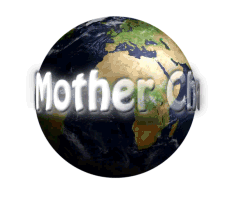This video sees the panel discuss the roles of technology, climate trends and water security in agriculture.
Today, there are hundreds of agriculture tech startups around the world, and some experts say the situation reminds them of the early days of the internet: There’s a lot of activity in agriculture, but no clear winners yet it’s hard to say who might become the Facebook or Amazon of the scene. Couple that with climate change pressures, the fact that two billion more people will live on this planet by 2050, and that just 40% of the world’s land is available to grow crops, and you have yourself a market ripe for innovation and big money.
As for tech in climate trends the electricity sector is the single largest contributor to greenhouse-gas emissions, representing 25% of the global total1. As such, this industry’s decarbonization pace is pivotal to achieving the Paris Agreement goal of limiting temperature increases to 1.5 °C by 2100. However, attaining this target means global emissions must peak by 2020 and rapidly decrease thereafter.
Renewable energy supply technologies such as solar and wind make up 10% of global generation capacity, and continue to be de-risked across scale, political landscapes and economies. Moreover, these technologies are approaching cost-competitiveness with fossil-fuel-powered generation. Yet, this progress is insufficient. The electricity sector requires on average ∼US$1 trillion per year invested until 2050 in additional renewable energy alone to achieve the global climate goal. However, the current investment pace for deployment — drawing upon deep pools of project finance capital — achieves only a third of this total.
As for water scarcity “Water is not something we can assume will be there when we need it, at the quality we need it. Climate change is expected to result in more erratic supplies of water so that means we need to get ready to do more with less,” said Christine Colvin, senior manager in the fresh water unit at WWF. One of the reasons for low dam levels is the over-use of stored water. In a interview, water and sanitation ministry spokesperson Sputnik Ratau said that the rise in water levels did not mean that people should stop using water sparingly.
Poverty is affected by climate change in obvious ways. The more the world heats up the less bearable the world becomes for those that still do not have effective shelter in 2017. Climate change is a serious risk to poverty reduction and threatens to undo decades of development efforts. As the Johannesburg Declaration on Sustainable Development states, “the adverse effects of climate change are already evident, natural disasters are more frequent and more devastating and developing countries more vulnerable.” While climate change is a global phenomenon, its negative impacts are more severely felt by poor people and poor countries. They are more vulnerable because of their high dependence on natural resources, and their limited capacity to cope with climate variability and extremes. Experience suggests that the best way to address climate change impacts on the poor is by integrating adaptation responses into development planning. This is fundamental to achieve the Millennium Development Goals, including the over-arching goal of halving extreme poverty by 2015, and sustaining progress beyond 2015.
Links: http://www.businessinsider.com/15-emerging-agriculture-technologies-2014-4?IR=T , https://www.news24.com/SouthAfrica/News/fighting-for-water-security-in-a-time-of-demand-20170322 , http://www.oecd.org/env/cc/2502872.pdf
By Alex Mitchison
 Mother Channel Environmental, climate change news and media.
Mother Channel Environmental, climate change news and media.



